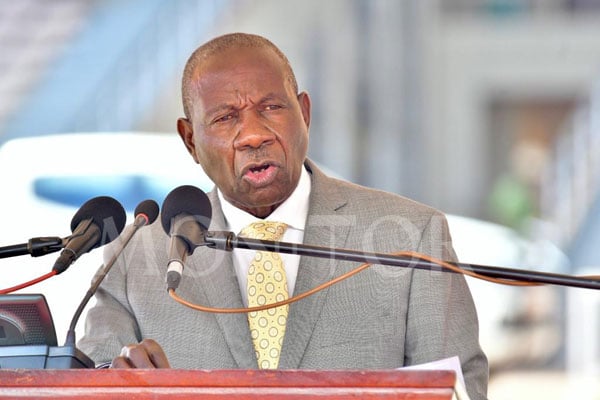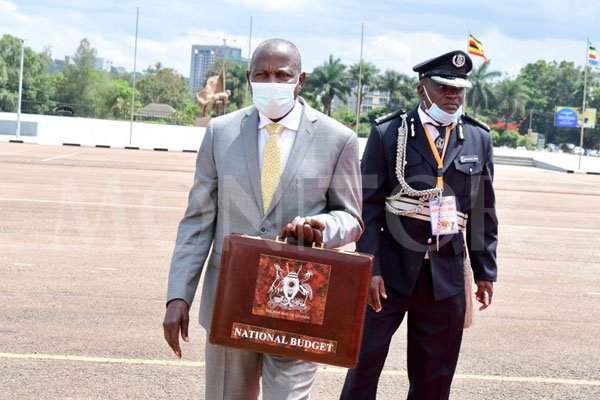Prime
Govt: Brave short-term pain for long-term gain

Fuel pump prices at Shell Bugolobi in Kampala on Tuesday. The price of fuel has been rising since the beginning of the year. Photo / File
What you need to know:
- Mr Patrick Ocailap—the Deputy Secretary to the Treasury—at Thursday’s post budget reiterated the merits of the average household having to bide their time. Not even the revelation of Mr Fred Muhumuza—the dialogue’s moderator—that he fuelled his car at an unprecedented Shs6,000 per litre of petrol that morning seemed to sit uneasily with government functionaries.
The question that the ABSA-NTV post budget dialogue staged this past week on Thursday posed was simple yet thought-provoking: Is the 2022/2023 National Budget responsive to economic recovery and growth? Delivered by Finance minister Matia Kasaija a couple of days earlier, the new budget—if not through its 18-word theme then the contents—was persistent in its urging that short-term pain be endured to pave the way for long-term gain.
Mr Patrick Ocailap—the Deputy Secretary to the Treasury—at Thursday’s post budget reiterated the merits of the average household having to bide their time. Not even the revelation of Mr Fred Muhumuza—the dialogue’s moderator—that he fuelled his car at an unprecedented Shs6,000 per litre of petrol that morning seemed to sit uneasily with government functionaries.
Mr Johnson Omolo, NTV’s general manager, had made it clear that the intention of the dialogue was “to put the budget into perspective.” His co-convener and ABSA Bank Managing Director, Mr Mumba Kalifungwa, would go on to admit that the future is one that ought to be assessed “with cautious optimism.”
He added: “As we were sleeping last (Wednesday) night, the Fed (the central bank of the US) increased interest rates by 75 basis points. What does that mean for the global economy … for the Ugandan economy … for our currency?”
Short-term pain
The answer from Mr Ocailap was that when the US sneezes, small economies like Uganda catch a cold.
“The holders of US assets globally are likely to move their assets back to the US because the interest rates are attractive and they will be able to deal with their inflation levels from there,” the Deputy Secretary to the Treasury would later say, adding, “If those who have been participating offshore by bringing their dollar-denominated assets to our treasury bond and bill markets get [them] out, it means then that the exchange rate kicks in. Pressure upwards kicks in.”
Mr Omolo had initially stated that he was unsure “whether the budget is tailored to cushion Ugandans from the shocks” such as the inflationary spiral triggered by the Russia-Ukraine war and pandemic-induced supply disruptions. In response, Mr Ocailap had mixed feelings while revealing that fiscal and monetary policies will be used “to deal with the adverse effects” of the wider cost of living squeeze.
“It’s a dicey way,” he went on to confess, adding, “[We] hope that maybe two or three months down the road … [a] new equilibrium, which is not as high as it is now, will emerge.”
Uganda’s central bank recently responded to spikes in annual headline inflation (6.3 percent) and core inflation (5.1 percent) by tightening monetary policy. The central bank rate was increased by one percentage point to 7.5 percent. Commercial banks are widely expected to pass the raised interest rate to consumer and commercial borrowers as well as savers. The net result could be a spending downturn that makes a recession distinctly possible.
Agriculture key
Mr Ocailap told the post budget dialogue that agriculture could be what pulls Uganda back from the brink. He further said: “The Agriculture Credit Facility has been doing wonders … that scheme has generated close to a capital base of Shs627 billion. It’s no mean achievement…a capacity of about Shs800 billion (including a contribution from the government) in that area is quite substantial to awaken the economy.”
But it’s in the Parish Development Model (PDM) that greater dividends are to be expected. Mr Ocailap, a trained development economist, described the PDM as “the missing link in our development agenda.” He added that if it is implemented “the way it has been thought through”, the PDM will be “very transformative.”
To achieve this, though, there will be a need to integrate “all the seven pillars of the PDM into a parish” and ultimately, added Mr Ocailap, “see the whole government operate as a parish.”
The strand of agro processing in the model “will help in minimising the post harvest losses, which in some cases are very high towards 35 to 40 percent.” Agro processing also “increase[s] … acreage output” and “once the produce is handled better, the next stage is the marketing or perhaps adding value through the rural electrification programme.”
In the interim, though, Mr Ocailap notes that “it’s going to be painful for a short while” as the government “maintain[s] market-based determination of prices.”
He added: “If we deal with aspects of food production domestically and also surplus for export and for the market, we think the index of inflation attributed to food volatility or shortages is going to slightly dampen the inflation tendencies; now then we remain to deal with the interest rates and exchange rate that’s induced by external factors.”
Rate hikes
While Mr Ocailap revealed that the government hopes to restore economic activity by ensuring that the taxman collects 59 percent (some Shs23.7 trillion) of our expenditures next Financial Year, there was a caveat. The rate hikes by central banks in the Global North will have wide-ranging effects. Ultimately, the uniformity in raising borrowing costs means that caution remains the watchword.
DON'T MISS: Coping with high commodity prices
“It tells us that when you go out to borrow to support URA in order to finance the budget next Financial Year, you have to watch out,” Mr Ocailap said flatly. “Borrow for concessional terms because interest rates out there are going to be hostile to us…borrowing foreign currency is actually coming with inherent risks of exchange rate when you come to debt servicing in the future.”




